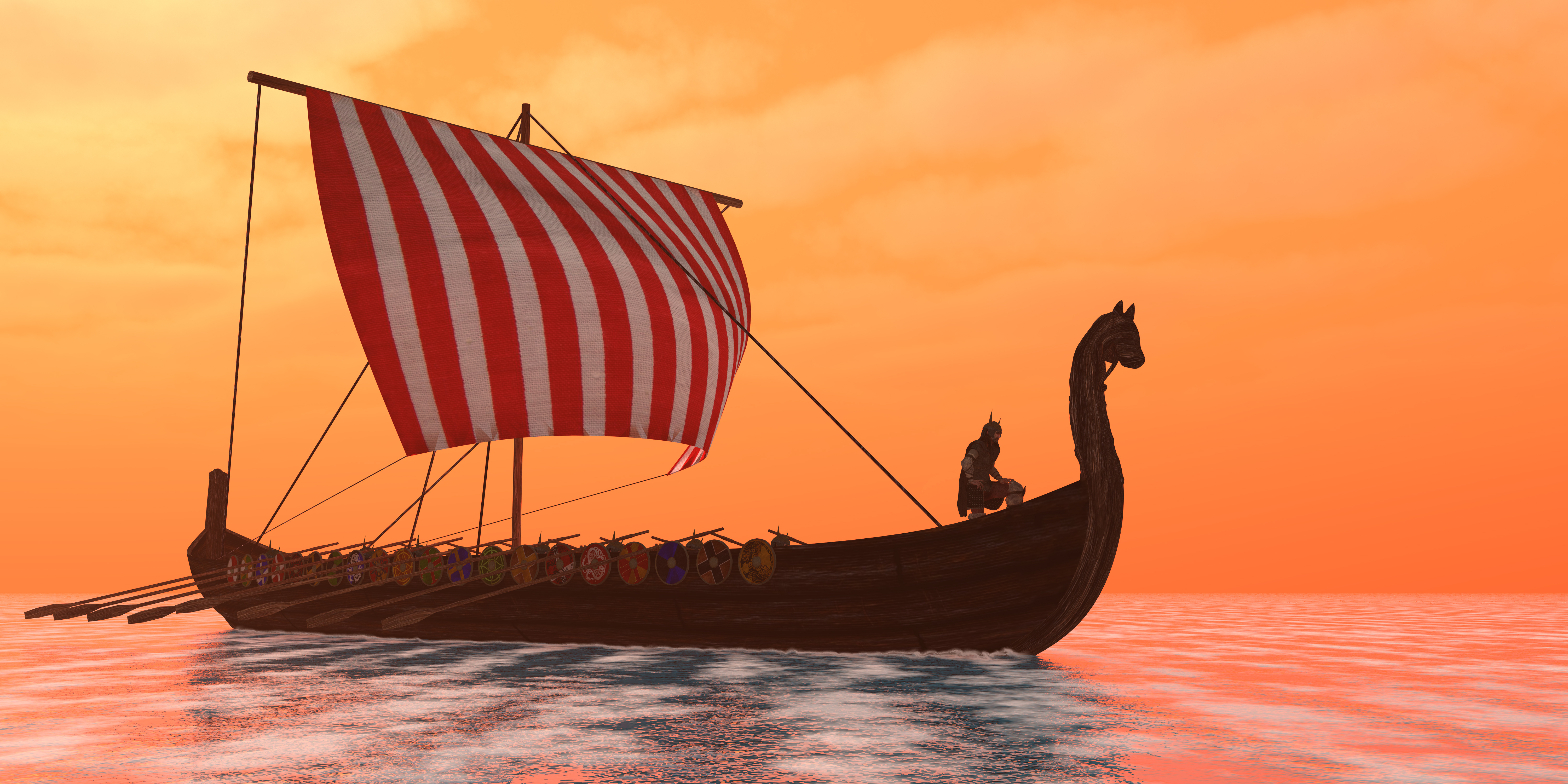
Comments from a few other books fit well with the previous post Background on Viking Age – ships for warfare, travel, and cargo – 4 of 5
Vikings: Raiders, Traders, and Masters of the Sea by Rodney Castleden, provides more explanations of ship types, starting on page 111.
When thinking of Vikings crossing the sea, we tend to think of them using those famed longships. Those were used on raids because they were so fast and with their shallow draft could beach on the shore or go far upstream.

For long distance travel, Vikings would use a knarr, also called a hafskip. A knarr used a sail for power with the few oars being for maneuvering. A longship had both sail and many oars. A longship had low free board and a knarr or hafskip had high free board. Free board is the distance between the deck of a ship and the waterline.
Wikipedia’s article, Viking ships, explains knarr’s typically averaged 54 feet long, 15 feet across (beam) and could carry a load up to 122 tons. Oars were used as auxiliary power with sail providing main power. Crew size ranged from 20 to 30. These ships were used for long-distance runs over open ocean, supplying places like Greenland and the northern islands.

Longships came in a variety of designs and sizes. Article says the typical way to describe longboats is the number of rowing benches, ranging from 13 up to one with estimated 34 benches. That would put the rowing crew at 26 up to 64 warriors. Designs on longships were long, sleek, and light. They could maneuver in as little as three feet of water and could be run up onto a beach.
Reason for longships to be double-ended is to allow them to immediately reverse direction. This was quite handy in the north Atlantic, with its deadly icebergs and sea ice. Speeds are estimated at 5 to 10 knots on average with best speed under ideal conditions at about 15 knots. Seems to me it would also be quite handy for leaving the scene of a raid, since it wouldn’t be necessary to turn the boat around before making a rapid escape.
In The Vikings, from The Great Courses, Prof Kenneth Harl says a village could build a longship of its own, assuming a skilled boatwright was available. He points out there were no written records for designing a ship, so the boatwright developed his skill by trial and error.
For starters, two tall, straight oak trees would be needed, one for the keel at 50 or 90 feet tall, and another for the mast. Around an additional 13 complete trees would be needed for the remaining lumber.
Picture the task. Find the right trees. Cut off most of the large branches. Fell the main trunk. Drag all the trunks and all the branches to the construction area. Split and chop to size the huge two trees into a keel and a mast. Split the 13 trees into halfs, then quarters, eighths and sixteens, then chop them into plank size. Then start assembling.